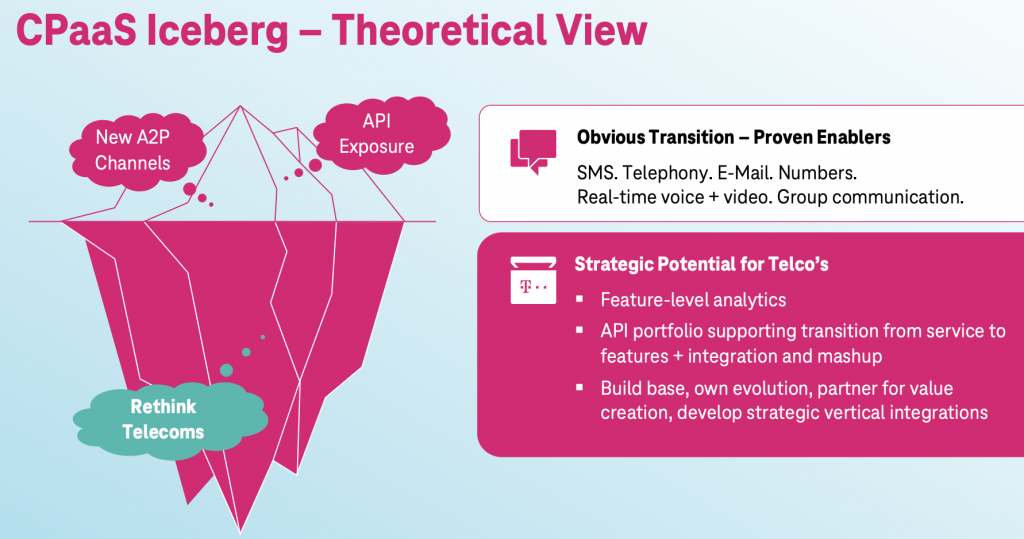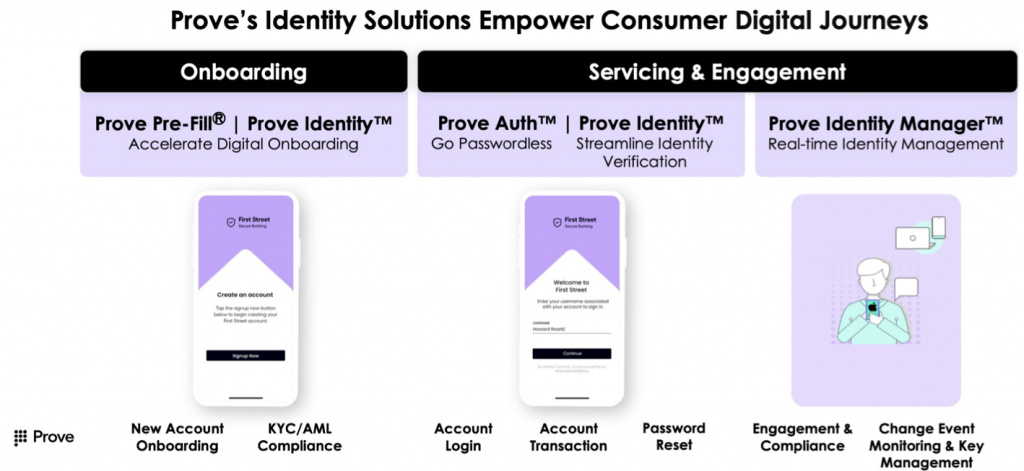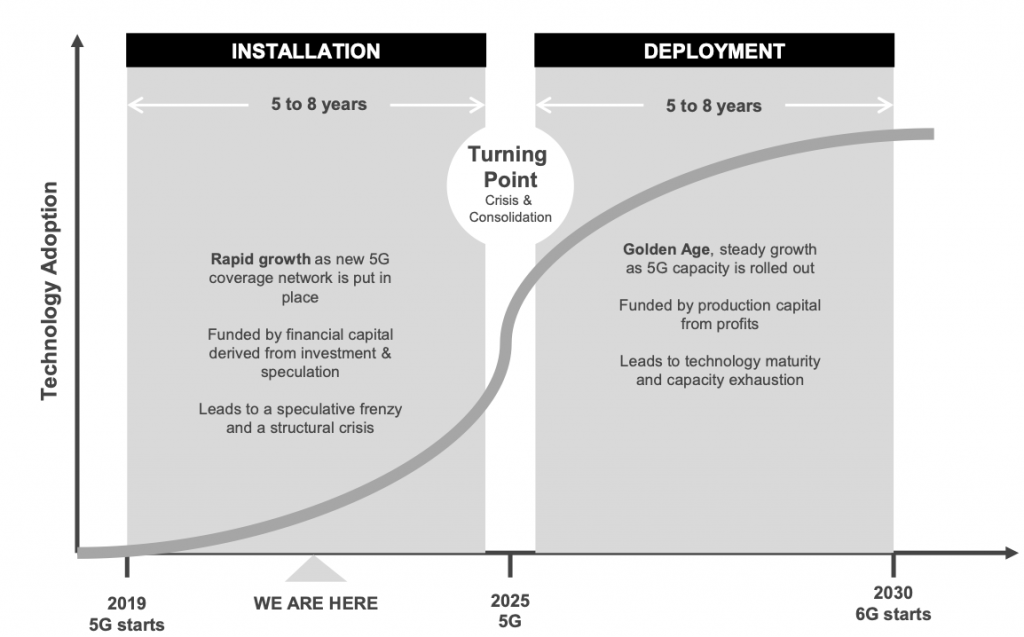These TADSummit 2022 reviews are a chance to give all the excellent content deserved attention and add my commentary on its importance. In this article I cover the presentations focused on Telcos and Programmable Communications. Here are the links to the review of the Keynotes, to my presentation What Happened Since we Last Met?, and the review of Conversation Intelligence.
With these links you can get to all the TADSummit content directly: Photos, Videos, Slides, Brief Agenda with videos and slides, Full Agenda with videos and slides.
And I can not say this enough, thank you to STROLID, Broadvoice / GoContact, Radisys, RingCentral, Stacuity, and AWA Network / Automat Berlin for sponsoring TADSummit 2022. And thank you to all the presenters and attendees in making the event excellent.
I’ll cover in this review:
- Are we there yet? DT’s journey with CPaaS as a large Telecom’s grassroots project. Sebastian Schumann, International Network Infrastructure, Deutsche Telekom. Slides and Video.
- Should Telcos give up on CPaaS? Jesus Cruz Manjavacas, Development Technical Manager at PLAY | GCP Professional Cloud Architect (REMOTE). Slides, Video1 and Video2
- What Everyone Needs to Know about Protecting the CPaaS Ecosystem from Unlawful Robocalls. Gerry Christensen, VP YouMail. (REMOTE). Slides and Video.
- Supercharging CPaaS Growth & Margins with Identity and Authentication. Aditya Khurjekar, GM Prove Protocol. Slides and Video.
- Great Expectations: The life and times of 5G. Vish (Vishwamitra) Nandlall, VP Technology Strategy & Ecosystems, Dell Technologies. (REMOTE). Slides and Video
- “Don’t” ask your developer! Dinesh Saparamadu, CEO, hSenid Mobile Solutions (REMOTE). Slides and Video
Are we there yet? DT’s journey with CPaaS as a large Telecom’s grassroots project.
Sebastian Schumann, International Network Infrastructure, Deutsche Telekom. Slides and Video.
Sebastian has supported TADHack and TADSummit since almost the beginning. You can see some of his TADHacks here: Timecha.in from 2018; Number Mapper from 2015. This presentation is a progress update on DT’s journey through programmable communications. I covered a briefing DT Global Carrier (Wholesale) gave on the project in early 2022 in CXTech Week 11 2022.
Sebastian’s presentation is packed full on insights on building a CPaaS within a telco. Its essential viewing / reading for any telco looking at programmable communications. One slide I liked in particular is shown below on the “CPaaS Iceberg”.
The core services, e.g. SMS, voice, video, collaboration are clear. However, underneath simply exposing some well known services comes a rethink in telecoms.
One point Sebastian highlights is ‘own evolution.’ Ringcentral exposes APIs from its programmable communications, which is labelled CPaaS, but its focus is not SMS or voice APIs though they are available. The focus is solutions for its customers either owned, or developed by a partners / customers. The silly marketing hype on API economies persists to this day in encouraging people to focus on API management than exposing services / application that matter to customers. I’ve said this for decades, it’s all about the services.
An example application could be a workflow common to the legal profession in logging time and purpose of client calls. Many CPaaS have moved on from basic comms enablers exposed through APIs, they’re commoditized, and instead focus on solutions for particular verticals, e.g. fan communications for football clubs. As mentioned in my introduction, “Welcome and What Happened?” The focus on services is as a core trend of the industry, along with consolidation across the aggregators.

Cem, Lead Program Manager at hubraum (part of DT), did a post recently that reviewed the project and the team. It provides a nice summary of the team making this project happen.
I recommend all telcos spend time listening to Sebastian’s presentation.
Should Telcos give up on CPaaS?
Jesus Cruz Manjavacas, Development Technical Manager at PLAY | GCP Professional Cloud Architect (REMOTE). Slides, Video1 and Video2
Last year Jesus presented on Is Mobile Identity still an opportunity for telcos? and in 2020 he presented on Programmable Telecoms inside a Telco. I’ve known Jesus for many years, back to the days he worked on JAIN SLEE, Rhino OpenCloud, and Mobicents.
Jesus asked the question on everyone’s mind, is it too late for telcos in CPaaS? They are not fast innovators. Twilio, RingCentral, etc have well-developed portfolios with mature business models and leading dashboards enabling businesses to measure their business performance through programmable communications, and mine the data for customer insights. It seems a rather steep hill to climb.
Should they bother building, or simply act as a channel and share in the revenue. As Ringcentral showed in their keynote.
Jesus reviews some of the reasons telcos should build, I include my comments in italics on the challenge with the reasons:
- Brand (but telcos are losing business to global internet brands in employee and customer communications)
- National sales organization (which sells phones and plans, or internet and payTV, but struggle with VAS)
- Ability to bundle (which is true)
Now PLAY brings many successes in programmable communications, especially to the SMB (Small Medium Business) segment. As covered in his 2020 presentation, on Programmable Telecoms inside a Telco. Some of the important lessons learned from their success include:
- Keep it lean, open source, and own development or of a local trusted development partner.
- Don’t reinvent the wheel. CRM is mature, partner / integrate locally popular services.
- Expose services through an API. We all Zoom, but the Zoom API enabled businesses like gyms to continue operation during the pandemic through integrating the Zoom service into their website.
- Build MVP and evolve from their, features require support. Help those businesses with special needs build it themselves and support themselves.
- Support is critical, the whole developer experience is critical, not just the API, its documentation, sign-up, support, trouble ticketing. It all needs to be slick and easy for the different user groups, coders and non-coders.
- His list goes on…
Jesus shares the next development steps for their programmable communications platform. Jesus brings over one decade of experience in VAS / programmable communications. His guidance is spot-on. And in combination with Sebastian’s presentation cut through so much of the BS I see published on CPaaS.
What Everyone Needs to Know about Protecting the CPaaS Ecosystem from Unlawful Robocalls.
Gerry Christensen, VP YouMail. (REMOTE). Slides and Video.
I’ve known Gerry throughout his time at Mind Commerce. Gerry reviews the unwanted robocall problem, and how STIR/SHAKEN has not yet fixed the spoofing completely because of number leasing. KYC (Know Your Customer) and behaviour monitoring are key.
Youmail is an app used by consumers and businesses to block spam calls. Think of it as an intelligence gathering network of who is sending spam voice and SMS, the numbers and scripts that are being used. Youmail Protective services, sits in the network to help carriers and businesses block spam in the network, as well as protect a businesses phone number reputation using the intelligence gained from its app.
Monitoring covers the cases where you can not know your customers’ customers; and some attested (approved) calls are unlawful when intermediate carriers are used. The only way to catch them is through monitoring.

For CPaaS providers, or any programmable communications provider, if customers are using your DIDs are you monitoring usage/behavior? And if customers bring their own DIDs are you investigating reputation as part of KYC?
For the above scenarios YouMail provides Scores:
- Fraud Score: Probability that telephone number is associated with fraudulent activity including, but not limited to brand impersonation
- Unlawful Score: Probability that telephone number that are unlawful based upon a variety of reasons including fraud as well as violation of federal laws and state statutes such as DNC, TCPA, and Telemarketing Sales Rules (FTC TSR).
- SPAM Score: Probability that telephone number is considered spam based on fraud and unlawfulness as well as degree of general unwantedness. This includes patterns indicative of undesired behavior as well as crowd-sourced feedback.
And a Watch Solution:
- DID/TFN (Direct inward dialing / Toll free Number) Spoofing Identification: Based on DID/TFN registration and context about the type of number owner/user, Watch may be used as a means of expeditiously identifying spoofing.
- DID/TFN Health: Service providers (such as CPaaS providers) may use Watch as part of KYC optimization to verify that DID/TFNs are not associated with unlawful calling activities.
- DID/TFN Owner/User Governance: As a real-world example, one of YouMail’s customers asked why we were blocking a particular financial service company’s number. We told them why and it was easily remediated.
It’s definitely worth investigating if you operate in North America.
Supercharging CPaaS Growth & Margins with Identity and Authentication.
Aditya Khurjekar, GM Prove Protocol. Slides and Video.
I’m grateful Aditya was able to attend in person, and as you can see from his presentation he loved the event. He was able to share Prove L2, an API to embed Prove in your business.
We’ve talked about the importance of identity and authentication for programmable telecoms over the years. I highlighted it as an aspect of where the programmable communications industry is heading in my introduction, “Welcome and What Happened?” .
Below is a nice graphic explaining what Prove delivers across onboarding, servicing and engagement. Programmable communications across voice, messaging (SMS, IP, social media, in-app), video, and payments can all be captured in vCon, fed into Prove’s Pinnacle’s engine, and provide identity and fraud management. There’s a natural partnership, so Prove L2 is an interesting development, check it out!

Great Expectations: The life and times of 5G.
Vish (Vishwamitra) Nandlall, VP Technology Strategy & Ecosystems, Dell Technologies. (REMOTE). Slides and Video.
Vish delivered a no-BS session on 5G. I wished Vish could be here in person as there is so much packed in his presentation, it would have spilled over into the coffee and evening discussions.
5G has come into an environment where its value is unclear, and the market has flat subscriber numbers, smartphone saturation, flat ARPU, and for most customers 4G is good enough. No ‘G’ has been introduced in such an environment.
Will the enterprise save 5G? The challenges for 3G and 4G in the enterprise are cost, integration, complexity, substitutes and control. 5G addresses none of those issues. Neutral host is applicable to 3G, 4G and 5G, but has its complexities. We covered MONeH (Multi Operator Neutral Host) for many years at TADSummit. Perhaps the enterprise is not the savior of 5G?
I really like the prediction model Vish showed, based on history, see diagram below. So what could be some of the technologies that drive the Golden Age of 5G? Vish discusses 3 areas: Immersive Experiences (why mobile?), Digital Divide (satellite?), and Industrial Automation (WiFi?). It’s a balanced review of these areas. The vendor marketing response is often, “you can not predict the future so let’s just believe something positive will happen.”
However, with 4G we already knew from fixed broadband, people would pay for internet access, the tail-end of 3G with HSDPA and HSPA showed people would pay. And they paid a premium because it was mobile. There is a gap this time, and the answer is not clear.
I think immersive will be niche, we can not underestimate the importance of multi-tasking between the real and multiple virtual worlds, we all do it. And sometimes we just want to focus on a TV show; we really enjoyed Alchemy of Souls and Wednesday on Netflix..
But back to Vish’s presentation, we can not predict the future, however, 5G is in a more precarious position than 4G. And anyone who thinks 5G APIs are the driver is deluded both on what APIs do, and do not appreciate the importance of ubiquity for applications and services. My personal view is there will be some use cases that need 5G, as opposed 4G in the golden age. However, I’m less certain those use cases will justify the investment in 5G from incremental customer revenues. The case will likely be more driven by the operational savings.
One other point that annoys me is most people I talk with in telcos are aligned with the above view. Yet the jabber in the industry conferences and online is all metaverse, gaming, enterprise 5G, and 6G. This gaps needs to close if we’re to focus on doing the right thing, not the popular thing. This isn’t politics, its business.

“Don’t” ask your developer!
Dinesh Saparamadu, CEO, hSenid Mobile Solutions (REMOTE). Slides and Video
I wrap up the ‘Telcos and Programmable Communications Review’ with a presentation from Dinesh, who has been with TADS since the beginning. We’ve known each other for over 15 years. hSenid Mobile and Dinesh are always a pleasure to work with.
The presentation’s title is a play on Jeff Lawson’s book, Ask your developer. I’d recommend also asking your customers, sales people, engineers, employees, investors, and mom, as well. Developers are one constituent, sometimes they care, sometimes they do not. Many dev evangelists are simps for Jeff, so he mined a productive seem with the book.
The key point of this presentation is helping non-developers deliver a far bigger bottom-line impact. hSenid Mobile knows this well. They’ve reviewed the results of Ideamart at TADSummit many times. Back in 2014 (yes, 9 years ago) they focused on non-developers, see the keynote from TADSummit 2014, Dialog’s success story of building a developer ecosystem using hSenid Mobile’s Telco Application Platform.
In their 2022 presentation they share their success and how they are moving to making it easy for non-developers to use AI and build chatbots. This echos Radisys Keynote on their Enterprise Digital Platform, link to keynote. Check out their whitepaper “Don’t ask your Developer“.
This rounds out an excellent set of presentations focused on telcos and programmable telecoms.
With these links you can get to all the TADSummit content directly: Photos, Videos, Slides, Brief Agenda with videos and slides, Full Agenda with videos and slides.

4 thoughts on “Telcos and Programmable Communications Review”
Comments are closed.